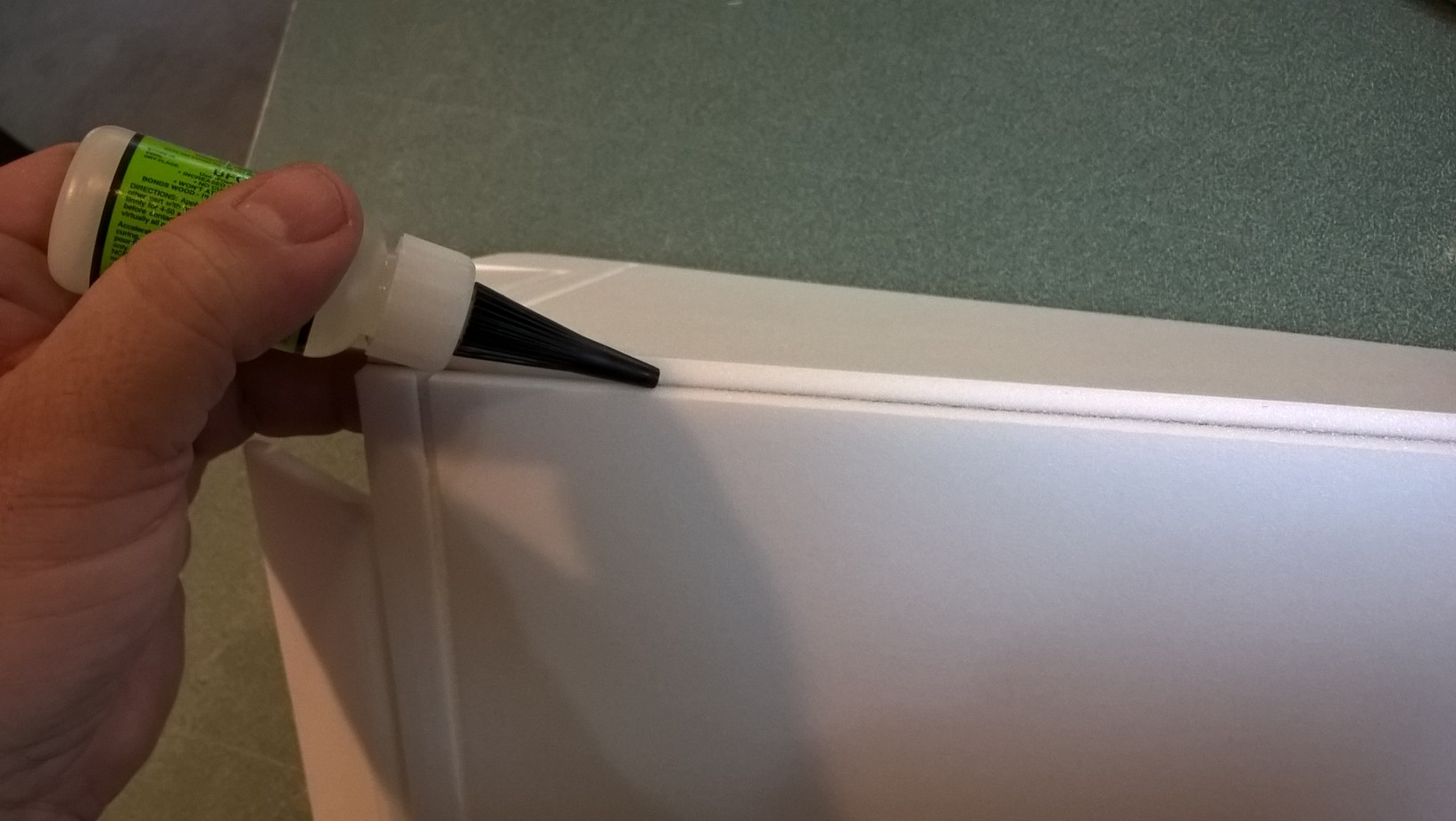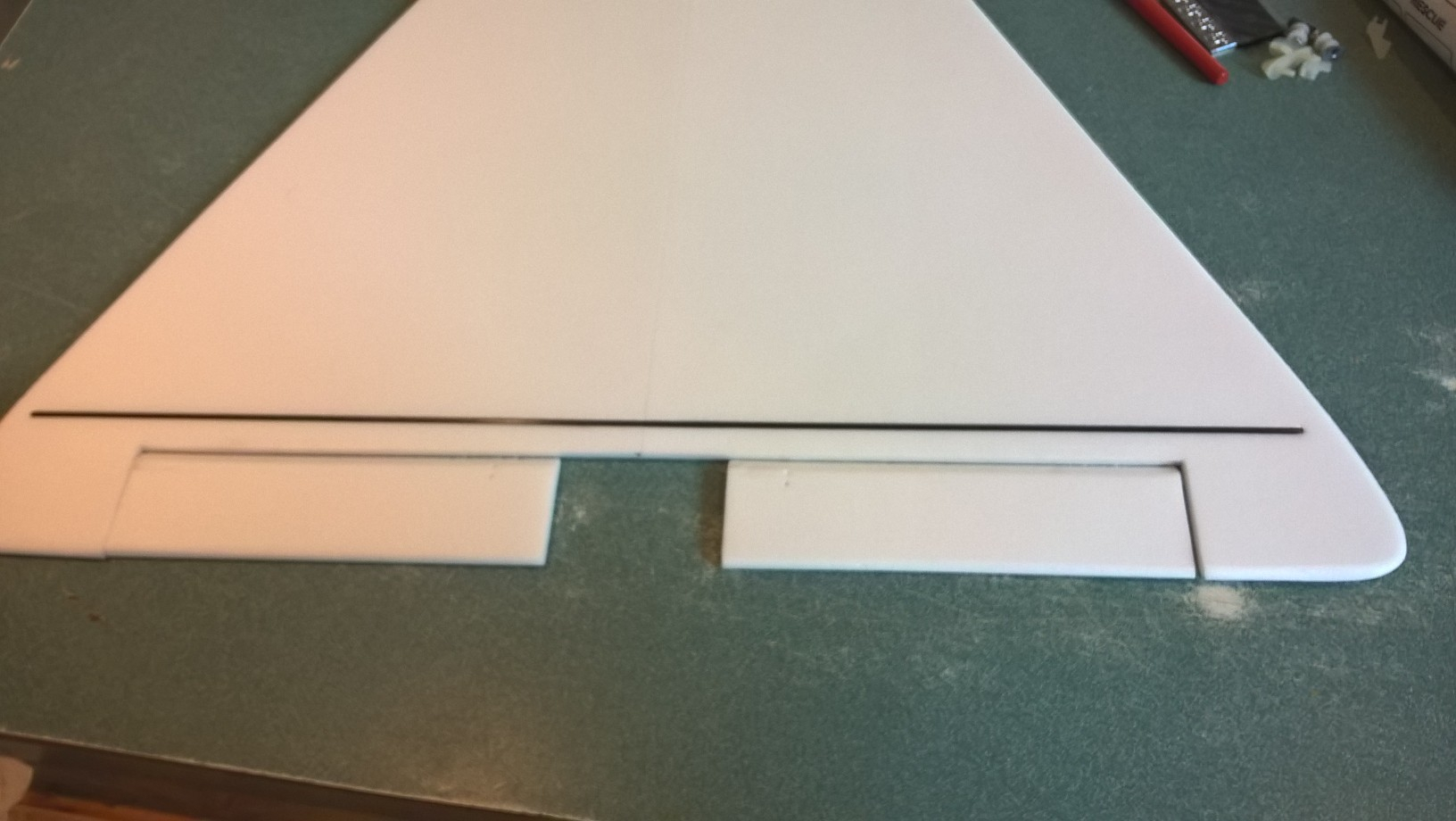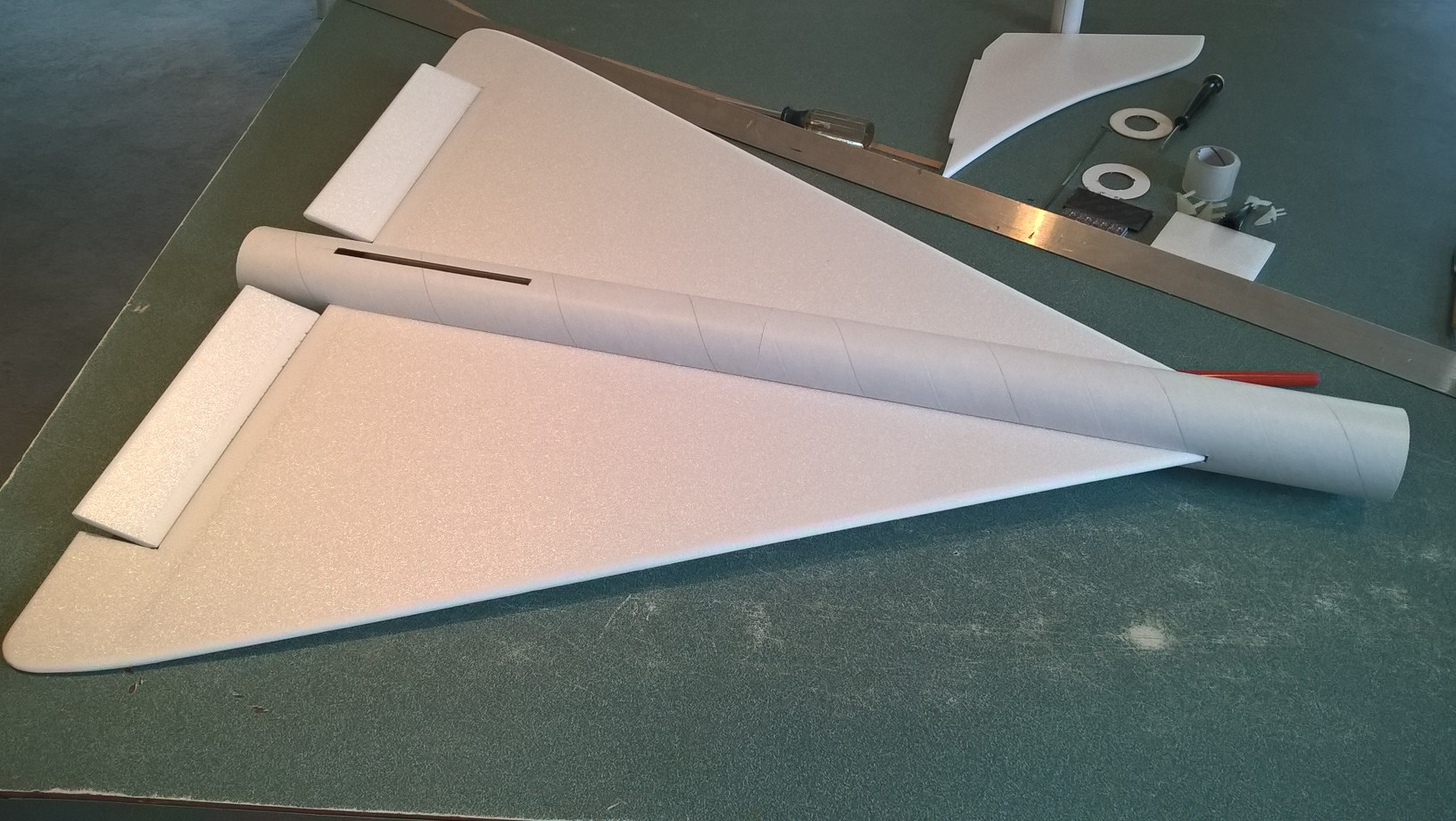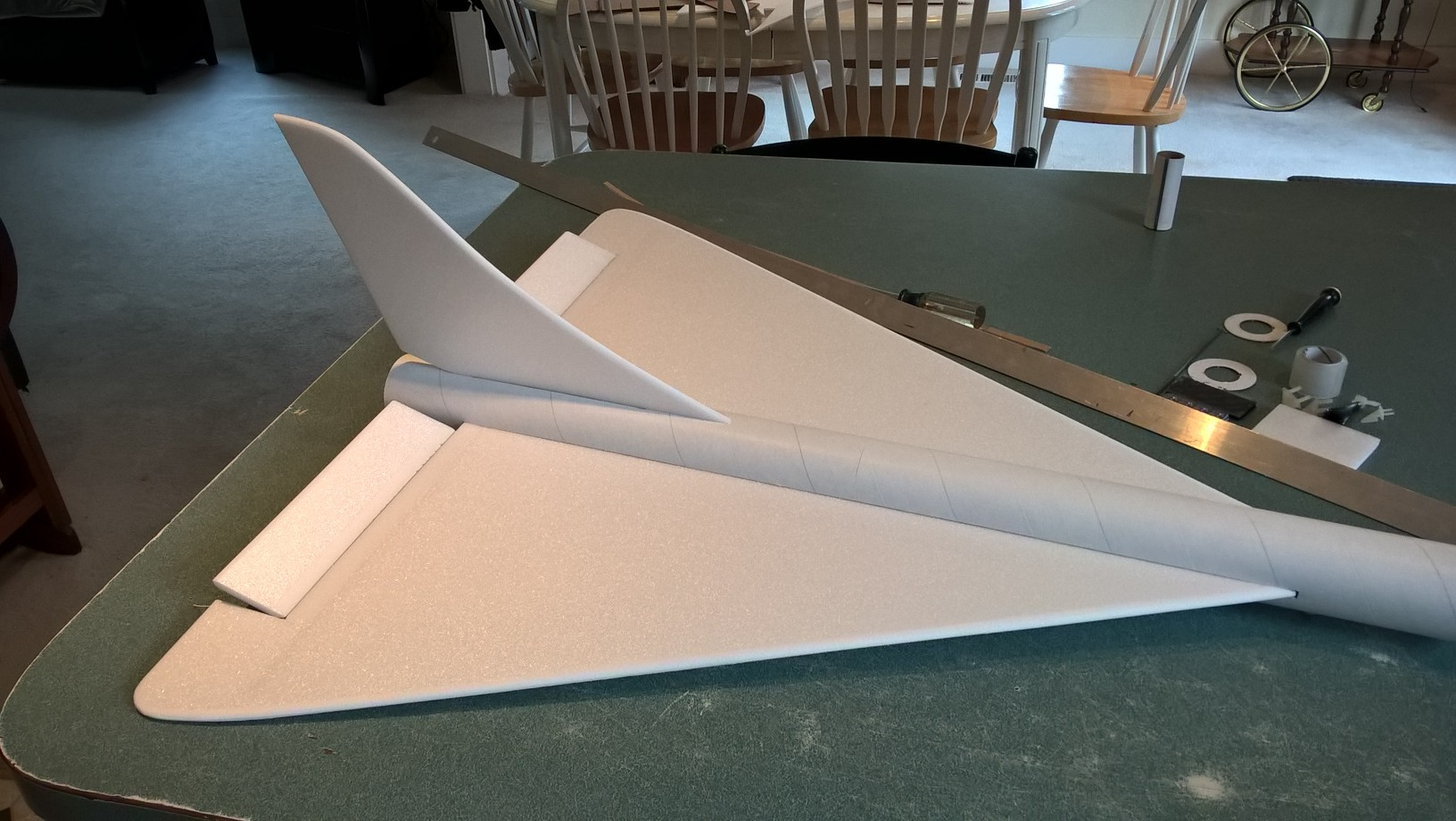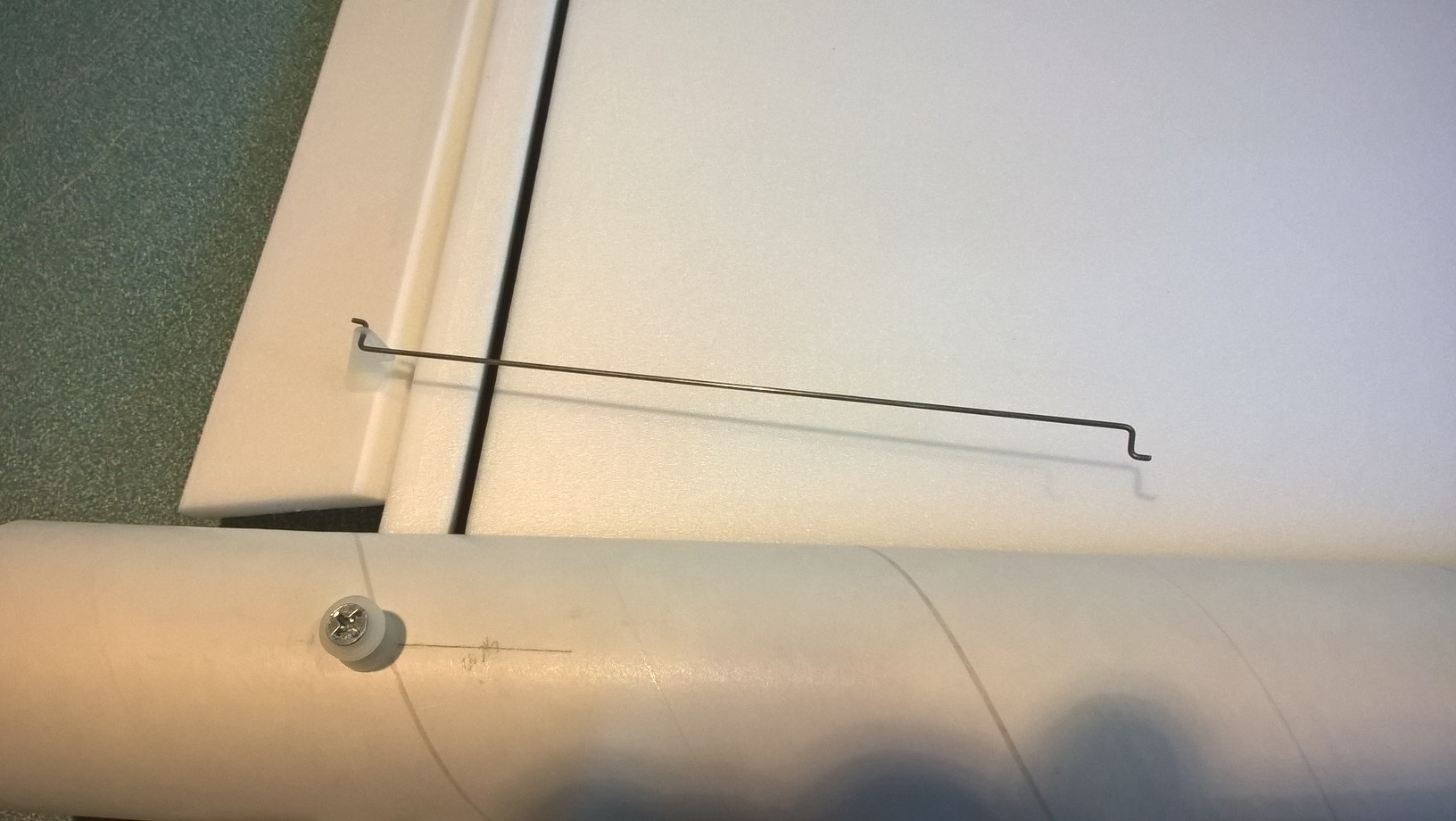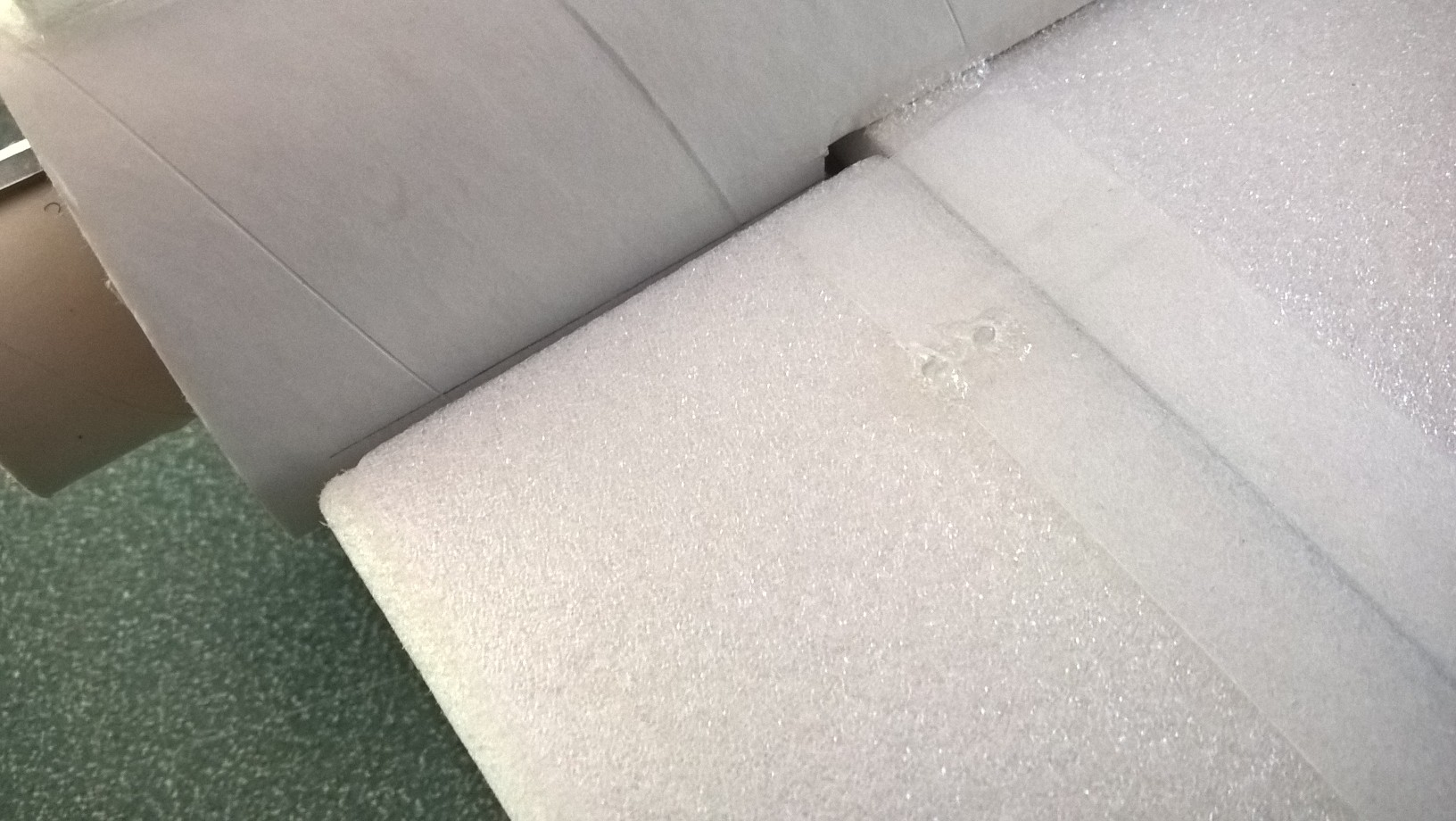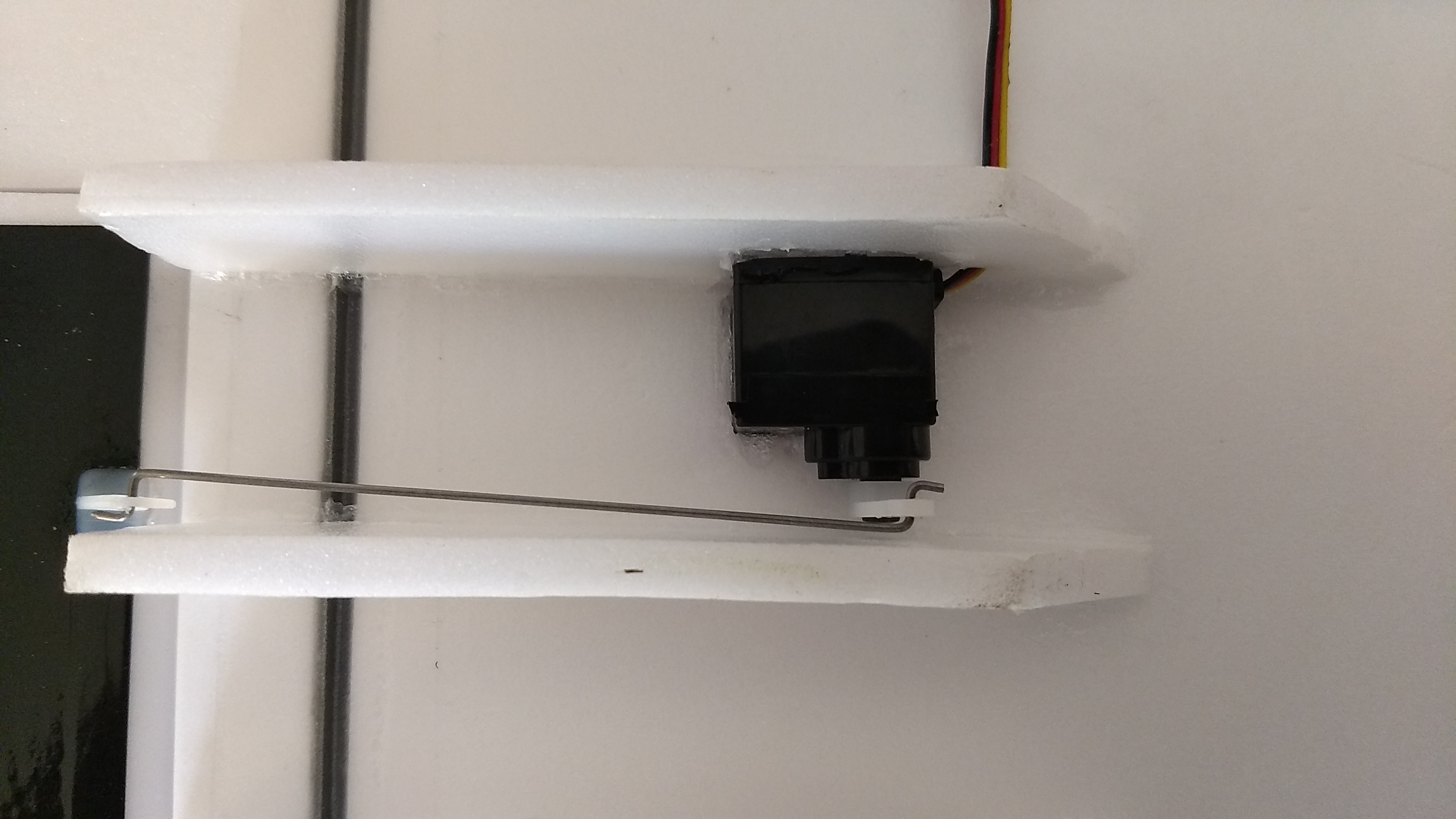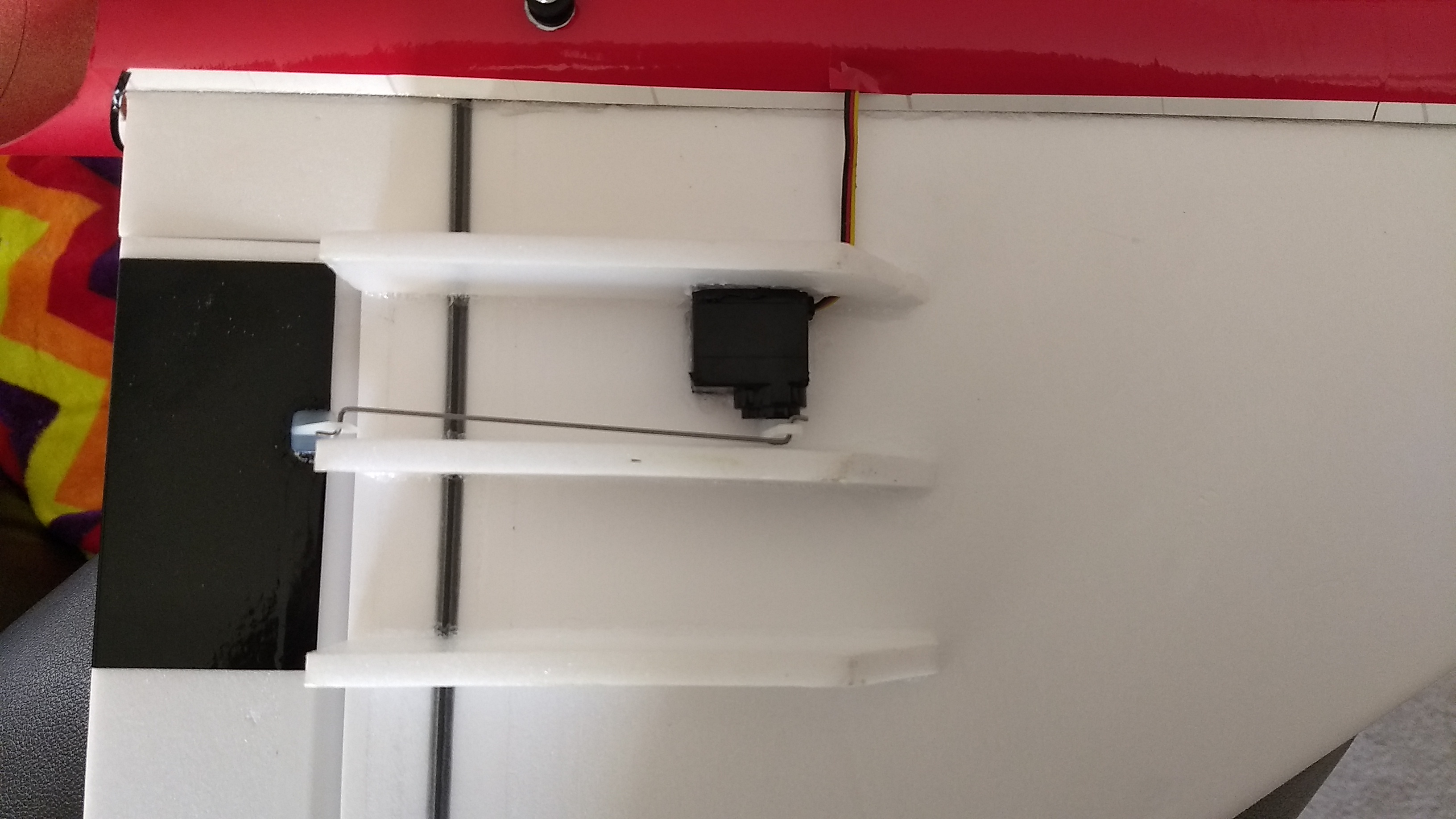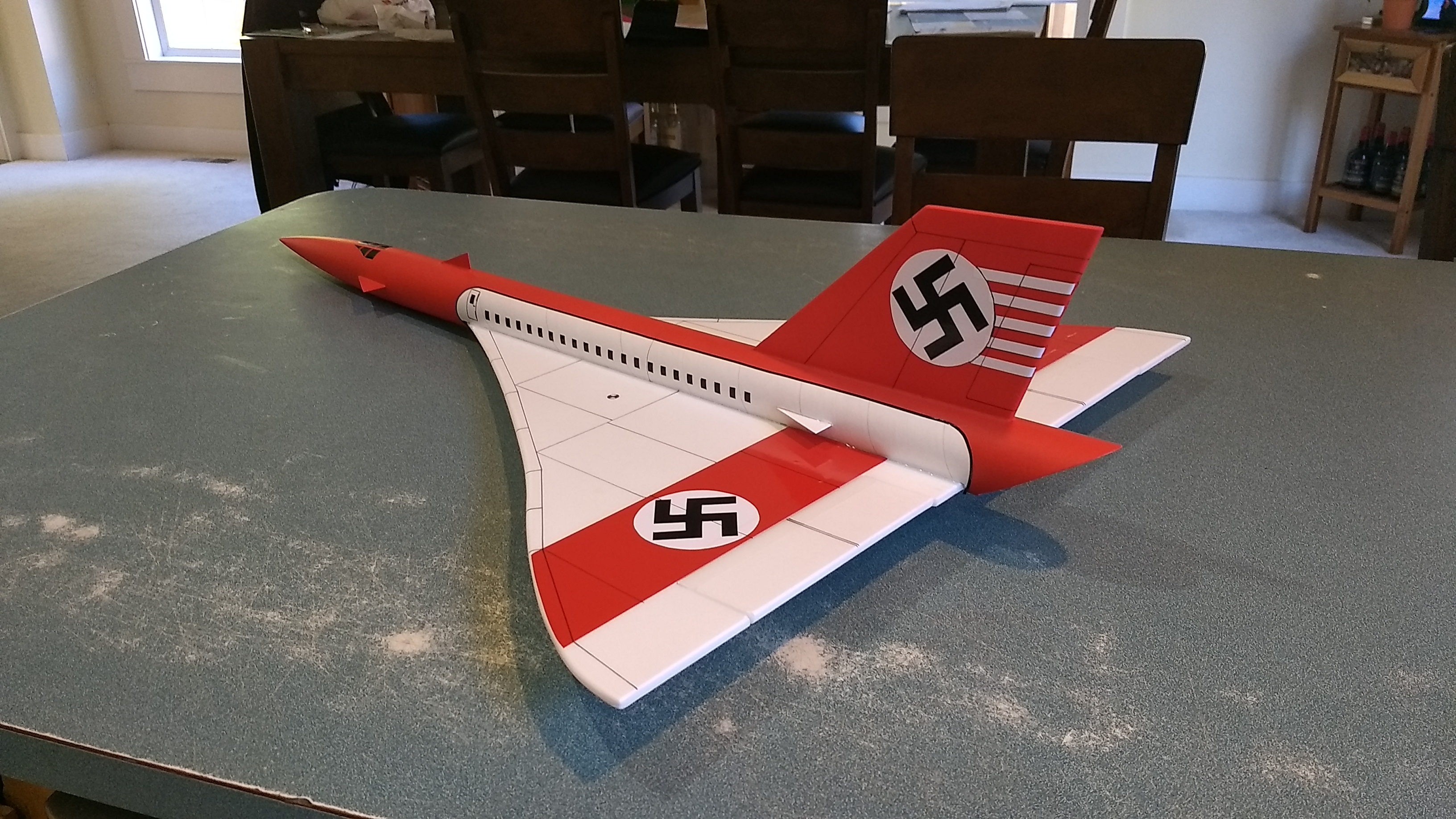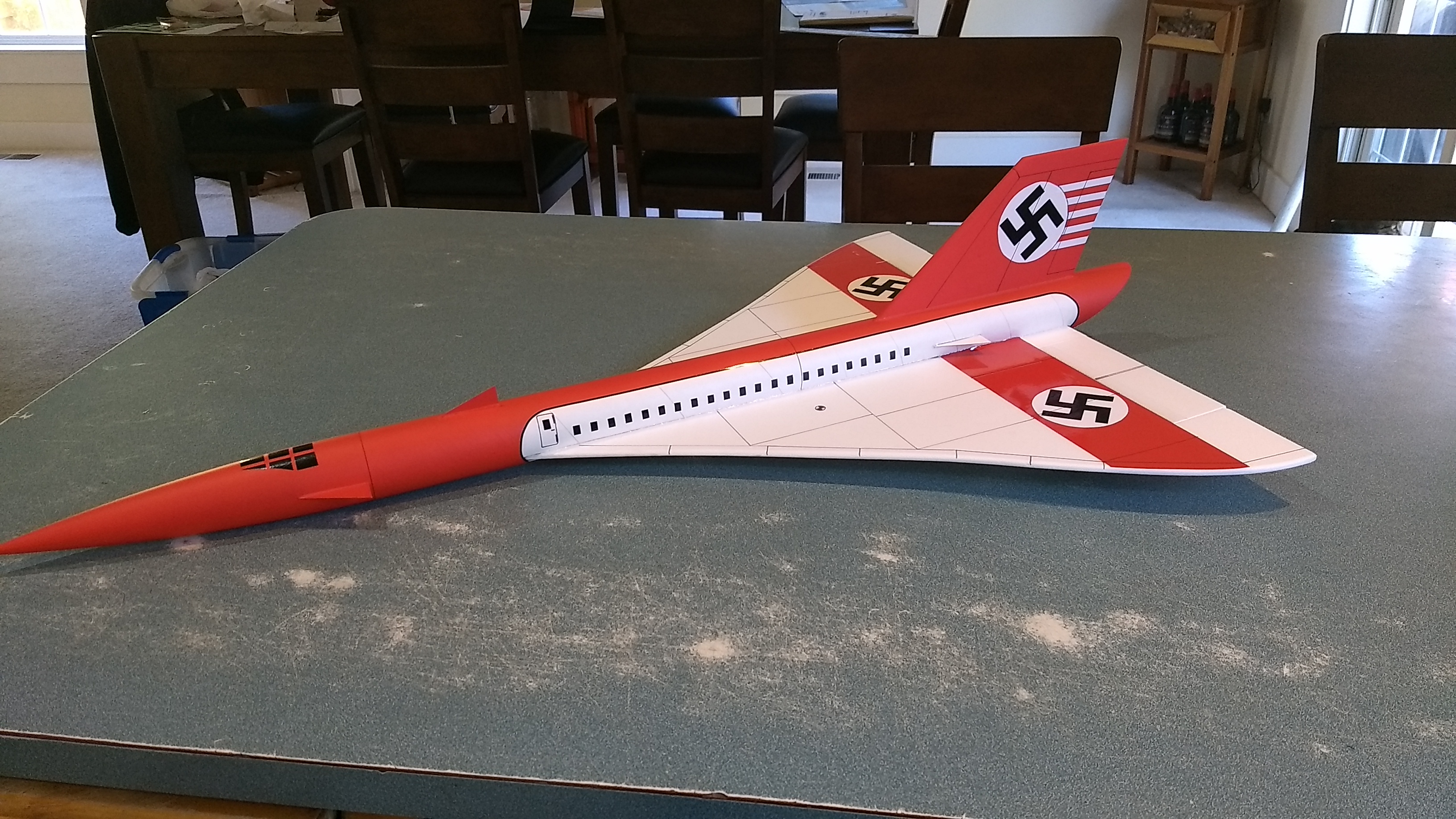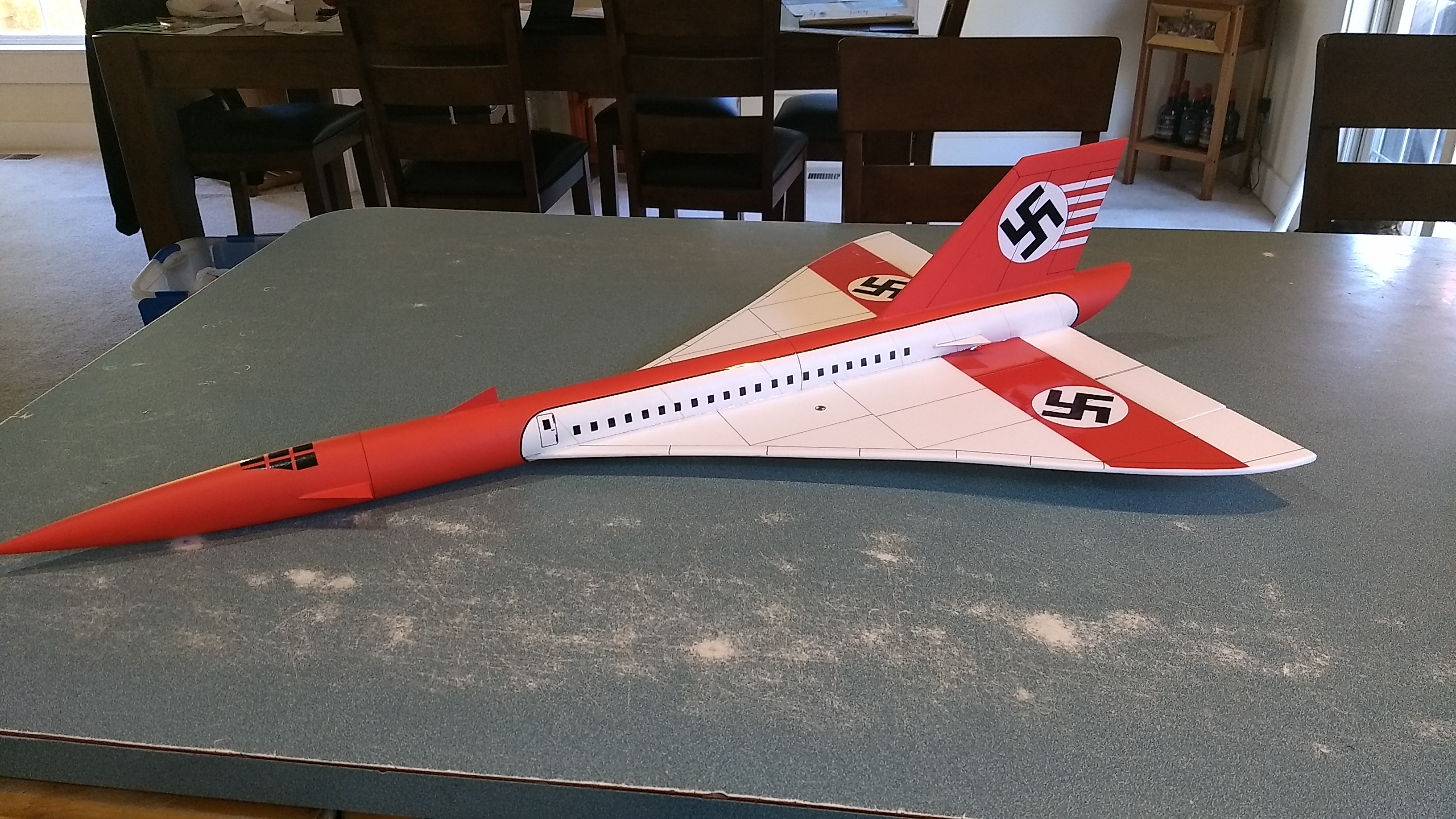
MitHC SST Rocket Glider Kit
The MitHC SST RC Rocket glider kit is based on the alternate universe german supersonic SST styled aircraft from the MitHC show. It features a low-mid mounted delta wing, a plastic nose cone, 2″ white tubing for the body and depron wing and tail surfaces. You will need two 10 gram type servos, two 12″-18″ servo extensions, a receiver, and a small 500mah single cell lipo battery. You will need a transmitter with delta or elevon mixing. I hand cut the vinyl trim for the wings/tail and painted the fuselage with Testors Flat Red.
Please refer to the General Information Link above then read the instructions completely before starting assembly. The assembly photos are for general reference but may not include every step in the instructions. If you want hardcopy to work from, all you have to do is click/drag/select and copy all of the text below, open word and paste with “keep original format” and it looks exactly like it does online then you can print it.
CG location for rocket flight: Right at the joint between the two body tubes.
Welcome to the world of rocket boosted radio control gliders. This is not a model for a novice RC pilot, but anyone who is comfortable with RC flying of a medium speed model should be fine. Read through the instructions, look at the photos and be sure you understand the step before commiting to cutting or glue.
MitHC SST Rocket glider instructions
Identify all pieces, the kit should contain:
1 wing taped together
1 wing spar(carbon fiber)
1 Nose Cone
1 vertical stabilizer
2 control horns w/pushrods
3 2.75″ long foam strips for centering the motor tube.
2 Body Tubes
Motor mount
Velcro(for battery and rx/bec attachment)
2 Rail buttons with t nuts/screws
six Intake Foam strips
5 .03 styrene canards
3M blenderm tape
Lead weight
Spare depron
Notes before starting:
Reference to CA+ means foam safe CA+, normal CA+ will melt the foam! Normally you need to use accelerator to get the CA to set on the foam since there is nothing for it to soak into and activate.
You may use 220-320 grit sandpaper and a sanding block to slightly round the edges of the foam if you prefer that look. It will not markedly impact the flight performance either way. Be very careful and use a light touch, it is very easy to catch the foam on the edge of the paper and tear the foam. Do any sanding before assembly.
Epoxy is not needed in this model. Weight is critical and the model is designed for the thrust and flight loads.
Assembly:
- Unfold the wing and glue the pre-taped joint using CA+ and accelerator, make sure it is flat
- Glue the wing spar in the pre-slotted area on the bottom of the wing with CA+ and then tape over with the included blenderm tape.
- Body Tubes. One tube will have a coupler glued in place. Glue the other tube onto the coupler, make sure the small arrow marks are aligned on the two tubes, that will ensure the wing slot mark and rail button marks are properly aligned. Use CA+ sparingly, as you will need to cut through the coupler to cut the wing slot.
- Cut the slot for the wing. I used a piece of angle aluminum to do this as it won’t slip while I’m cutting. Take your time and be careful. Test fit the wing in the slot, if it is snug, sand or trim as you don’t want it to drag/damage the wing as you are inserting it. Note since the wing is low mounted the slot needs to be wider than the foam width, you will need to adjust this to fit the wing sliding all the way through. The lower edge of the slot isn’t supported once it is cut so if you have to trim the slot again to fit, trim the upper cut line as it is supported better.
- Insert the T nuts from the inside of the tube and install the T nuts, rail buttons and screws, don’t tighten them down really hard, just snug enough to not come out. Do this at this time. I found it isn’t too hard to insert the forward rail button through the wing slot.
- Insert the wing and make sure it is centered, then glue in place with foam safe CA+
- Test fit the vertical tail into the slot and make sure it fits. Make sure the tail is straight with no warps, bend carefully by hand to straighten it if needed. Glue into the slot using foam safe CA+ making sure the tail is perpendicular to the wing and is straight.
- Glue the foam centering strips on the motor mount tube on the three lines marked. See picture for clarification.
- Glue the motor mount into the rear of the model, the motor mount will be inset slightly from the bottom rear of the body tube and will nest inside the slot in the wing. You don’t need a lot of glue here, just enough to keep it from falling out, the wing will keep it from moving forward. The vertical stab tab will make contact with the top of the motor tube. Make sure you glue the tube so that the glued/taped end is forward. If you need to sand the tabs glued on the motor tube so that it fits lightly sand till it will insert fully.
- Glue each control horn in place on the bottom of the surface, the holes should be pointing toward the front of the model and the pushrod should be closest to the body tube. Repeat on the other side.
- Put some CA on the top of the control surface where the horn prongs stick through, this locks it in place.
- Test fit the forward dorsal and rear body canards into their slots, make sure the canards are perpendicular to the tube and the front dorsal is aligned with the vertical fin and glue in place with foam safe CA+.
- Test fit then glue the canards into the nose cone using CA or model cement, make sure they are parallel with the wing.
The basic construction is now complete.
Radio Installation
Note: Your radio needs to be configured for Delta mixing, this means that the servo arms will move the same direction during elevator stick movement and opposite for aileron stick movement. Connect your servos to the receiver one in the aileron connection and one on the elevator connection and apply power. Use a servo arm at least 9/16” long and with holes small enough that there won’t be slop with the pushrod wire when installed. I use the hole furthest out on the servo arm, to maximize movement. On some servos there are a long two-ended servo arm, you can trim off one end if needed to get sufficient length. Zero out any trim settings on the transmitter. The model once the motor has burned out is nose heavy and flying wings lose pitch authority when nose heavy so you want as much up elevator travel for trim/flare as possible.
- Connect a servo to each pushrod. If the pushrod is too tight, you can use twist an exacto knife in the servo arm hole to make it larger, but be careful and do not make it too large. The servo electrical wires should be pointed toward the front of the model and the servos should be right next to the body tube. Once connected, tape each servo in place so that the control surfaces are centered. Flip the model right side up and look at it from the rear. Moving the transmitter stick back(up elevator) should move both elevons up. Moving the transmitter stick to the right should move the right elevon up and the left elevon down. If you can’t get the servo reversing to give you the right polarity try swapping aileron/elevator inputs to the receiver or turning the servos over and swapping the servo arms to the other side of the output shaft. If that is correct, continue.
- Flip the model upside down and supported. The servos may be attached to the model using double back servo mounting tape(not included) or by directly gluing the servo to the wing with CA+ or a small amount of epoxy. Double back servo tape can loosen over time and with exposure to heat, I prefer to glue the servo in place. With the radio still on, put a small amount of glue on the servo, being careful not to get any near the output shaft. And set it in place on the model keeping the control surface centered. Do the same to the other side. Make sure the glue is set before continuing. The servo and pushrod should be at 90 degrees to the hinge line so that it moves easily and fully. The z bends in the pushrods are made with a tool but they may not align perfectly depending on servo placements, you can use a needle nose pliers to make little adjustments to the bend angle if needed.
- Flip the model back right side up. Make sure the control surfaces are centered, use trims if needed. Now measure the control surface movement. Full elevator movement should be 1” in each direction, aileron movement should be 1/2″ in either direction. Since the model will be nose heavy, extra elevon movement helps to give sufficient authority during glide.
- If you have a flap/elevator mix you can program up elevator to a switch setting. The model needs approximately 1/4” of up elevon during glide. My model needed about 1/8″ of downtrim for straight boost.
- Attach a 16-18″ servo extension to each servo.You just need to be able to route the wire to the front of the tube to attach it to the receiver.
- Make a 1/8″ wide by 1/2″ long slot in the bottom of the wing/fuselage on each side and pass the wires through to the inside and toward the front. I routed the servo wires through the bottom of the tube and the wing so that there was enough room to get the wire to route up to the front. I then used a bit of red trim to cover over the slot and wire.
- Attach the servo wires to the receiver and make sure they are going the right direction.
- Use the included Velcro to attach the receiver 2″ from the front of the body tube at the top(or enough to allow the wires to clear the shoulder of the nose cone). This allows you to be able to remove and replace the receiver if needed for repairs or for removing the servo wires. I attached the battery inside nose cone shoulder and my balance came out perfect without any nose weight needed.
- Install the lower intake strakes, these simulate engine intakes as well as hide the servos and lift the rear off the ground so that the servo arms don’t contact first. I mounted one on either side of the servo and another about 1″ outboard from the servo. You will need to notch one of the strakes to clear the servo wire before you attach it. The rear of the strakes are just forward of the elevon hinge line.
- Paint and decal your model as desired.
- Insert your heaviest loaded rocket motor into the motor mount
- Support the model at the balance point indicated for boost. I use two pencils with the eraser pointed up and held in place with a small hand vice. Place the model upside down on the pencil erasers on the balance point indicated in the kit spec sheet. Use the included lead weight to balance it by placing it as far forward in the nose or at the tail of the model as needed. Do not try to fly the model with it balancing it behind this point. The adage is, a nose heavy model flies poorly, a tail heavy model flies once
- Re-install the receiver and battery
Flying: See the General Information link at the top for flying instructions. Be ready on the first few flights to keep the model straight till you have the trims set perfectly for boost and glide.
- Install the rail buttons, then Join tubes with the coupler keeping arrows aligned on the bottom wing line mark
- cut wing slots
- install t nuts and hold in place
- add rail buttons
- glue the wing joint
- glue the spar and tape over the spar and wing joint with blenderm
- test fit wing in place
- glue the wing in place when centered
- glue in the vertical stab
- Test fit and install the motor tube so that the vertical stab tab makes good contact, the motor tube will be inset slightly from the end of the lower part of the rear tube.
- pushrods, one for each side
- install each pushrod into the bottom of the control surface.
- add glue to the top pins of the control horn
- Install servos, then install the intake strakes on each side. The inboard strake will need to be notched for the servo wire before gluing in place.
- add third intake strut ~ 1.25″ outboard from the others
- Servo wires routed into the body tube lower half, through the wing and forward, rear engine black trim added on the lower elevon halves to the rear of the control horn and about centered on the strakes.
- connect the servos to the receiver and hold the receiver in place using velcro inside the body tube. I also attached the flight battery inside the body tube for CG reasons.
- Nose Marking
- Rear view
- Quarter view
- Side view
- Bottom view




